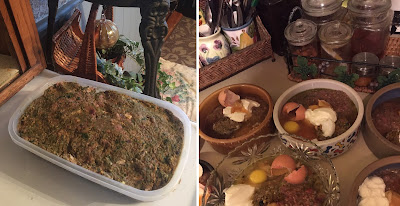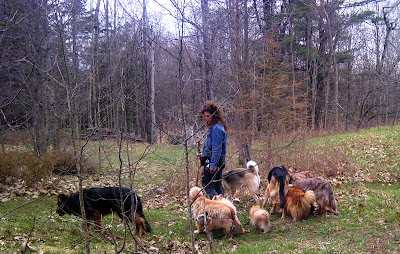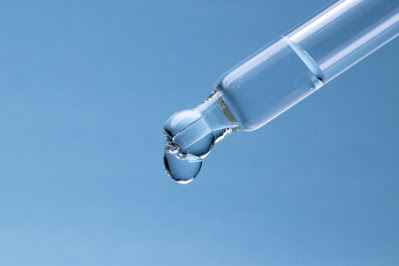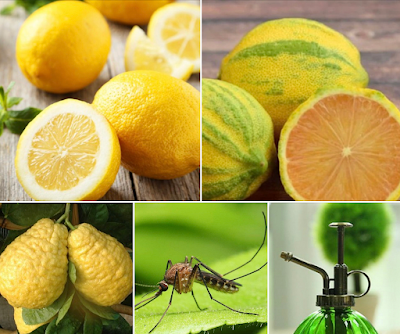Sardines for Dogs, Puppies, Cats and Kittens, An Important Supplemental Food for Good Health
- Health Benefits of Sardines for Dogs and Cats
- Nutritional Value of Sardines
- Serving Guidelines
- How Often
- How Much
- Raw or Cooked? How to Choose
- How to Serve Raw
- How to Serve Gently Cooked
- How to Safely Handle and Prepare Raw Sardines
- Preparation Instructions
- How to Safely Defrost Frozen Fish
- Where to Buy Raw, Frozen Sardines
- How About Canned Sardines
- Concerned About Mercury Contamination?
- Concerned About Over-Fishing?
1.0 Health Benefits of Sardines for Dogs and Cats
- Bones
- Brain
- Eyes
- Heart
- Joints
- Immune system
- Metabolism
- Skin, and more.
2.0 Nutritional Value of Sardines (Pilchards)
An Excellent Source of Protein
Sardines provide 21 grams of protein per 100 grams. This is similar to protein per gram from:
- Beaver
- Buffalo
- Chicken
- Hare (wild rabbit)
- Quail
- Turkey
Glandular & Organ Therapy from Head, to Fin, to Tail
Sardines are a perfect, natural supplement to support your dog and cat's glandular and organ function.
A whole sardine includes nourishment for your dog and cat's:
- Brain
- Eyes
- Heart
- Kidney
- Liver
- Pancreas
- Reproductive organs
- Spleen
Rich in Omega Fatty Acids
Sardines are one of the richest sources of fish-based omega fatty acids (primarily DHA and EPA).
- 100 grams (3.5 ounces) of sardines provides approximately 1480 mg of omega fatty acids. Primarily DHA and EPA.
- DHA, (ocosahexaenoic acid) is essential for brain and eye health.
- EPA (eicosahexaenoic acid) is an important anti-inflammatory.
Essential Vitamins
Sardines provide
a significant amount of bioavailable vitamin B3, B12 and vitamin D, along with other essential vitamins:
- Vitamin A (retinol)
- Vitamin B1 (thiamin)
- Vitamin B2 (riboflavin)
- *Vitamin B3 (niacin)
- Vitamin B5 (pantothenic acid)
- Vitamin B6 (pyridoxine)
- Vitamin B6 (folic acid)
- *Vitamin B12 (cobalt and choline)
- *Vitamin D
- Vitamin E
- Vitamin K
*substantial amount
Essential Minerals
Bioavailable minerals in sardines:
- *Selenium, an antioxidant, important for immune, endocrine, thyroid health
- *Phosphorus
- *Calcium, essential for bone and oral health
- **Sodium
- *Iodine
- Iron
- Potassium
- Magnesium
- Copper
- Zinc
- Manganese
*substantial amount
**natural sodium is an important essential mineral. Inorganic salt (iodized salt, common table salt) is harmful, read more here.
3.0 Serving Guidelines
3.1 How Often?
For Dogs:
Sardines can be included in the daily diet, or included several times a week. Or choose to rotate between sardines and other wild-caught, low mercury concentration fatty fish.
For example:
- Anchovies
- Herring
- Salmon
- Smelt
- Sprats
- Salmon
- Trout
3.2 How Much?
How much fish can you include in your dog and cat's diet?
Fish can represent up to a maximum of:
20% of your dog or cat’s animal protein intake on a daily or weekly basis.
Avoid creating thiamine deficiency:
Fish should NEVER be used as the only animal protein in a dog or cat’s daily diet long-term.
A diet that contains too much fish can cause thiamine deficiency. Thiamine deficiency is a serious and life-threatening condition.
4.0 Raw or Cooked? How to Choose
Let your dog and cat indicate their preference. If they prefer gently cooked sardines, rather than raw, respect your dog or cat's indicated preference.
4.1 How To Serve Raw
Sardine can be served intact and whole. Or you can cut the sardine into chunks.
Let your dog and cat indicate their preference.
Every part of the sardine is safe and beneficial for your dog and cat. The sardine head, body, bones, organs, innards, skin and tail.
When your dog and cat consume the entire sardine the nutritional and therapeutic value is optimal to support overall health. Best for your dog’s eye health, bone health, glandular health and more.
4.2 How To Serve Gently Cooked
Pour a small amount (i.e., half an inch) of filtered or spring water in a stainless steel saucepan.
- Turn the stove top element heat on low.
- Allow the sardine to cook just until the flesh of the fish is tender.
- Remove from heat, allow to cool to room temperature.
- Part the flesh of the cooked sardine down the centre and pull out the spine. Discard the spine.
- The sardine is ready to serve.
5.0 How to Safely Handle and Prepare Raw Sardines
5.1 Preparation Instructions
Before serving raw sardines or other fish, freeze the fish for a minimum of 21 days.
Never give your dog or cat raw sardines (or other fish) that has not been frozen for at least 21 days.
Freezing the sardines (or other fish), for 21 days kills parasites that may be present in the flesh of the fish.
Learn more:
- Go to this article.
5.2 How to Safely Defrost Frozen Fish
Defrost frozen sardines and other fish by placing the fish in the refrigerator to thaw out.
- As soon as the fish has thawed they’re ready to serve raw.
- Use thawed sardines within 2-days of thawing.
6.0 Where to Buy Raw Frozen Sardines
Purchase whole fresh frozen, raw sardines from...
Your local:
- Fish market
- Grocery store
- Raw Pet Food Store
On-line:
- Raw food suppliers
- On-line suppliers of meat, fish for human consumption
More tips on serving and preparing fish, here
7.0 How About Canned Sardines and Other Fish?
Canned sardines in water, no salt are an appropriate option for your dog and cat’s emergency food pantry.
However, I DON'T recommend canned fish, including canned sardines as part of your dog and cat’s regular diet. As well, I don't recommend sardines packed in tomato sauce. Here's why...
The Cooking Process – Nutritive Loss and Carcinogens
Canned sardines are steamed, fried, grilled, or smoked, then placed in a can with liquid (i.e., water, vegetable oil, tomatoes, etc.) and then cooked in an industrial pressure cooker.
The method used to cook the sardines, e.g.; steaming, frying, grilling and cooking temperature, and pressure cooking temperature result in:
- Nutritive value loss
- High temperature cooking (over 300 degrees Fahrenheit / 150 degrees Celsius) causes a spike in heterocyclic amines. Heterocyclic amines are carcinogenic chemicals caused by high heat cooking.
Cans and Can Linings – Toxic Exposure
Most food companies have replaced toxic BPA can linings with acrylic and polyester linings. However, the issues of toxic chemical contamination of canned food remains. Non-intentionally added substances (NIAS) present in the can, and can lining migrate (leak and move), into the food.
Metal can and lining migrates to food include:
- Acrylic resins
- Amino resins (plastic polymers made with aldehyde)
- Catalysts
- Esters, organic and inorganic
- Epoxidized edible oils (plasticizers)
- Lubricants and waxes of various type and origins
- Metals
- Oligomers (a type of polymer present in acrylic and polyester)
- Reaction accelerators to remove oxygen from canned food
Research has shown that even short-term feeding of canned food products increases the concentration of toxins in a dog and cat’s body.
Canned
Sardines in Tomato Sauce - Toxic Exposure
If you do include canned fish in your dog or cat’s diet, I recommend you avoid canned sardines in tomato sauce.
The tomatoes used in most canned fish products are conventionally grown with toxic chemical bactericides, fertilizers, herbicides, fungicides and pesticides. Its standard practice to spray conventional (not organic) tomato crops with an array of 30 chemical pesticides.
Lycopene, a powerful antioxidant in tomatoes, other red fruit, and vegetables, can help protect cells from oxidative damage. However, chemical residue is toxic and contributes to oxidation and inflammation in the body.
My recommendation:
Avoid products that contribute to toxic load.
Select clean-sourced lycopene-rich foods instead.
Lycopene-Rich Foods and Your Companion Animal's Health
Examples of a few lycopene rich foods:
Lycopene per 100g of tomato product:
Sundried tomato provides more than 3x the lycopene found in tomato sauce. Choose organic sundried tomatoes. See the lycopene comparison below:
- Sundried tomato – 45.0 mg per 100g
- Tomato paste – 28.7 mg per 100g
- Tomato sauce – 14 mg per 100g
- Steamed tomato – 3 mg per 100g
- Raw tomato – 2.5 mg per 100g
Lycopene per 100g of other fresh fruit:
- Guava (pink guava), fresh - 5 mg lycopene per 100g
- Watermelon, fresh - 4.5 mg per 100g
- Papaya, fresh - 1.8 mg per 100g
- Grapefruit,
fresh - 1.4 mg lycopene per 100g
Lycopene Rich Foods For Your Dog
- Comprehensive list of health benefits
- Extensive list of dog appropriate lycopene rich foods
- How to include lycopene rich foods in your dog's diet
8.0 Concerned about Mercury Contamination?
The concentration of mercury in sardines is 0.012 parts per million, one of the lowest mercury concentrations found in fish.
Sardines are a small plankton eating fish, and are a food source (forage fish, prey fish), for larger fish. Sardines are low on the food chain, and as such do not have high concentrations of mercury present in larger fish. Learn more about selecting the lowest mercury contaminated fish here.
9.0 Concerned About the Impact of Sardine Fishing Practices?
Pacific sardines (pacific pilchards) from Australia and Mexico are not considered a threatened (over-fished) species, and are harvested using methods that don’t adversely impact other important species. Pacific sardines are Marine Stewardship Council certified.
Brazilian sardines (Orangespot sardines) are currently designated as over-fished. Although there are measures in-place to support rebuilding of stock, not all of the measure have been implemented. As well there are no measures currently in-place to protect other important, vulnerable species from harm.
European pilchards (Atlantic sardines) are currently designated as over-fished. Currently there are no stronger measures in-place to prevent over-fishing. As well there are no measures currently in-place to protect other important, vulnerable species from harm.
✓ None.
✓ I don't sell food or supplements.
✓ I'm not aligned with any companies.
Article and graphics by Karen Rosenfeld















